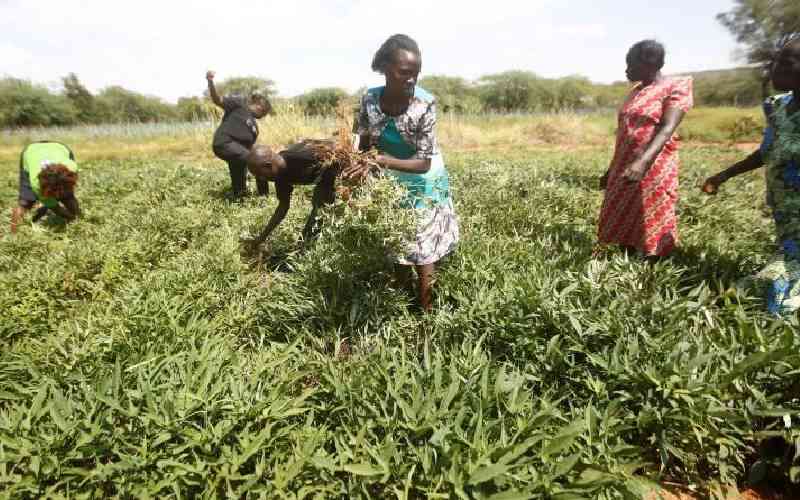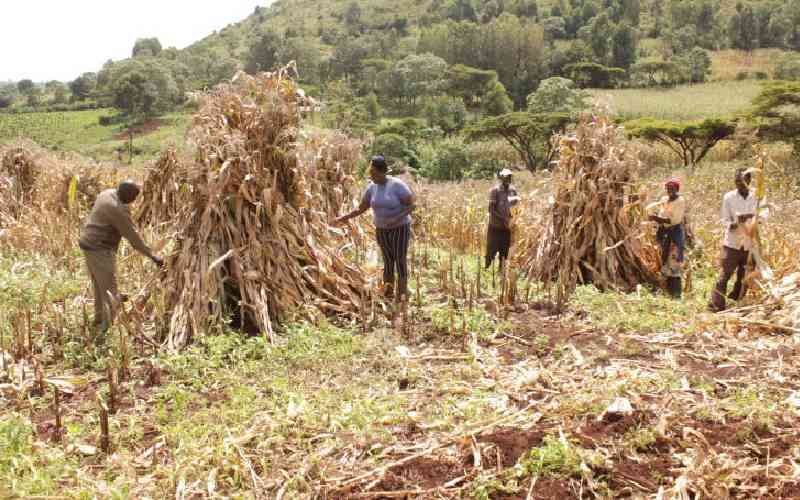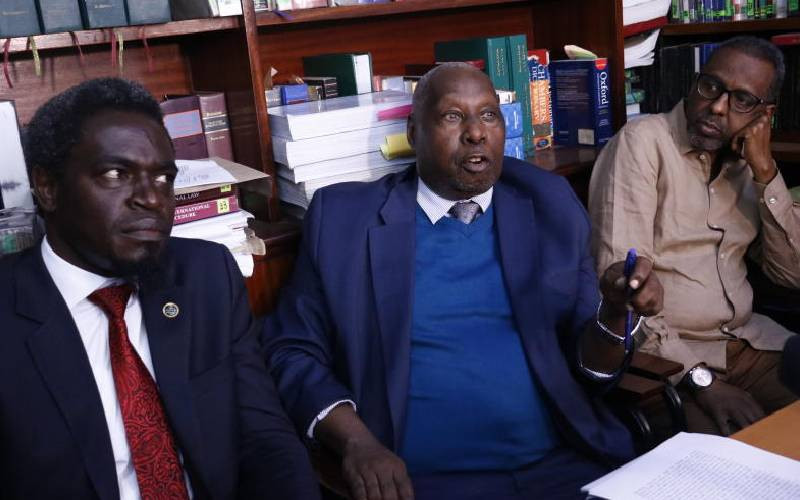With more innovative financing, Kenya can meet 60 to 70 per cent of its food needs from its own land.
According to Bashir Jama, the director of the Soil Health Programme at the Alliance for a Green Revolution in Africa (Agra), Kenya has been performing sub-optimally in food production because farmers are not getting adequate financing.
To address this, Agra is working with the Government to set up risk-sharing facilities with commercial banks.
Under their arrangement, the Government has disbursed money through several banks to enable farmers access loans at low interest rates for the purchase of machinery, seeds, fertiliser, among other inputs.
“We call this innovative financing. We should innovate around financing because [lack of it] is holding back farmers’ ability to feed us well,” said Dr Jama.
He added that with accessible financing, Kenya can double or even triple food production in high-potential areas and “complement that with a strategy that focuses on appropriate management practices in dry lands, such as sound irrigation systems.”
Potentially productive
Close to 80 per cent of the country is classified as arid and semi-arid land (ASAL), with the remaining 20 per cent classified as high-potential land, endowed with good rainfall and soils.
The high-potential areas receive between 800mm and 1,600mm of rainfall per year, while ASALs get less than 800mm.
“Areas in Western Kenya, such as Kakamega and Vihiga, are potentially high-production areas, with rainfall of about 1,500mm per annum. However, they produce a tonne of produce per unit hectare when they should be producing five to six tonnes with inputs. Additionally, here we have good rainfall but not good soils,” said Jama.
He added that Kenya has yet to put its land and water resources to maximum use as regards irrigation in the ASALs.
“You can have the amount of food Israel is producing using irrigation and the right technology,” he said.
Jama estimates that less than seven per cent of potential agricultural land in Africa is irrigated compared to 35 per cent in Asia.
“We have the water, we have the land. It is time we put those arid areas under irrigation, not necessarily large-scale projects, which, despite their benefits, can be difficult to manage. The cost of maintenance and operation can be high.”
Jama said he is not dismissing the importance of large-scale irrigation schemes, but is of the opinion that there is a lot more room to explore small and medium-scale irrigation.
Stay informed. Subscribe to our newsletter
High-potential areas
Last year President Uhuru Kenyatta launched the first phase of the Galana-Kulalu Food Security Programme — a multi-million-shilling project in Tana River and Kilifi counties — to boost the country’s food security.
This phase is expected to cover 10,000 acres out of the million acres targeted for the entire project.
In the highlands and other high-potential areas, Jama said a strategy to intensify production and get more kilogrammes of produce per hectare through access to seeds, fertiliser and finance would go a long way towards increasing Kenya’s food stocks.
Agra, he added, is determined to help African countries utilise their farmers’ capacity to reduce poverty rates by half in line with the millennium development goals (MDGs).
The organisation intends to do this by enhancing farm productivity, which involves helping improve seed systems, revitalising soils, increasing access to markets, designing better policies, strengthening farmer organisations and financing smallholder farmers.
Agra was created in 2006 through a strategic partnership between the Bill & Melinda Gates Foundation and The Rockefeller Foundation.
[email protected]
 The Standard Group Plc is a
multi-media organization with investments in media platforms spanning newspaper
print operations, television, radio broadcasting, digital and online services. The
Standard Group is recognized as a leading multi-media house in Kenya with a key
influence in matters of national and international interest.
The Standard Group Plc is a
multi-media organization with investments in media platforms spanning newspaper
print operations, television, radio broadcasting, digital and online services. The
Standard Group is recognized as a leading multi-media house in Kenya with a key
influence in matters of national and international interest.
 The Standard Group Plc is a
multi-media organization with investments in media platforms spanning newspaper
print operations, television, radio broadcasting, digital and online services. The
Standard Group is recognized as a leading multi-media house in Kenya with a key
influence in matters of national and international interest.
The Standard Group Plc is a
multi-media organization with investments in media platforms spanning newspaper
print operations, television, radio broadcasting, digital and online services. The
Standard Group is recognized as a leading multi-media house in Kenya with a key
influence in matters of national and international interest.









